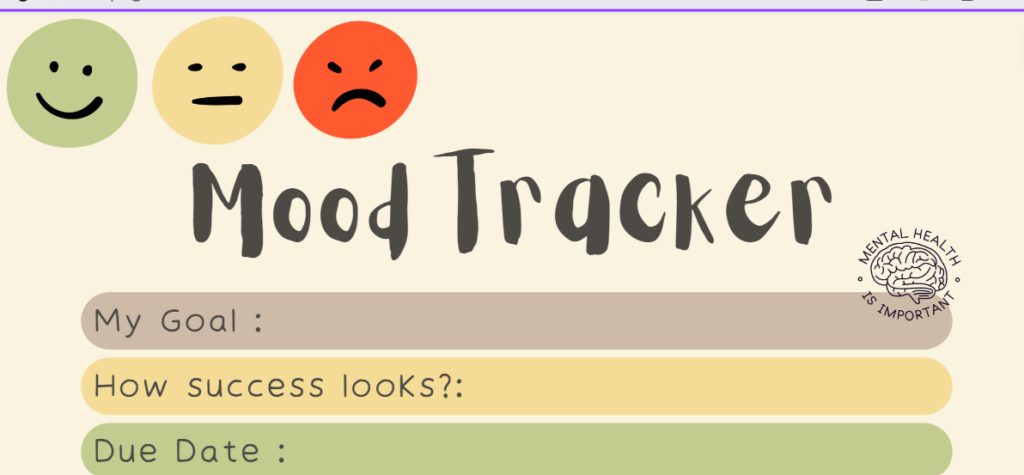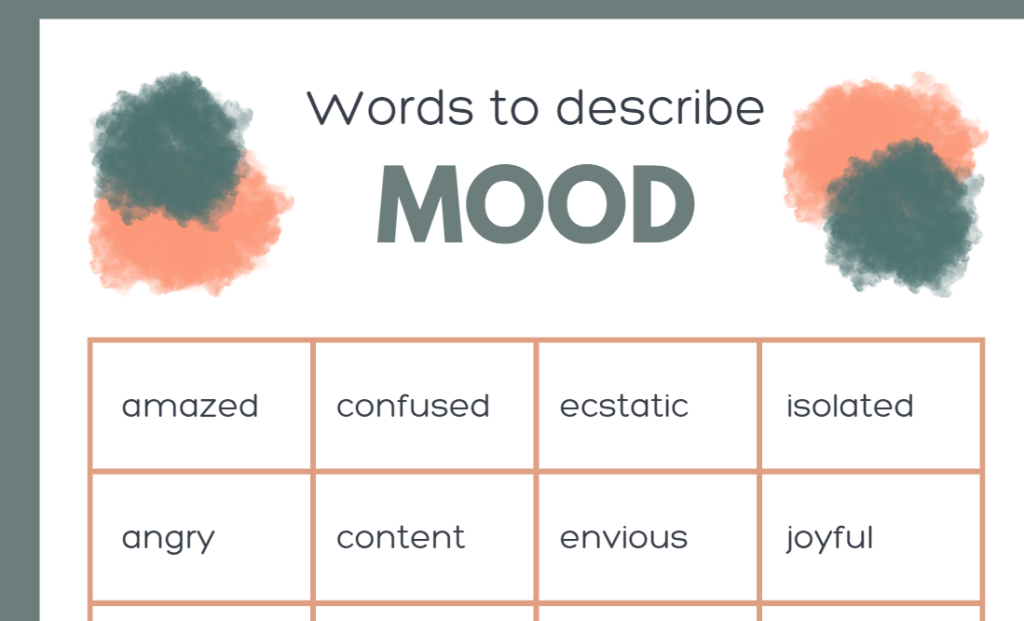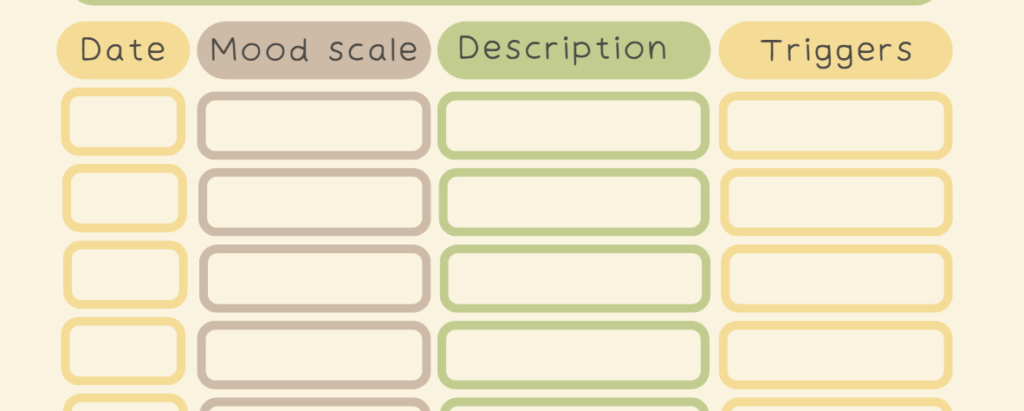» Physical and mental well-being
The Power of Mood Tracking and Step-by-Step Guide
1. What is mood tracking?
In a world that is constantly changing, and where maintaining our mental health is very important, a new tool stands out: mood tracking. This method allows people to monitor and record their emotions, helping them to understand themselves better and grow.
Digital tools have advanced mood tracking beyond simple journaling. They offer easy ways to delve deeper into our feelings.
At its most basic, mood tracking involves regularly documenting one’s emotional state. This practice helps individuals identify patterns, learn what triggers changes in their mood, and establish connections between their feelings and factors such as sleep quality, diet, or daily activities. Mood tracking is a valuable tool in achieving emotional balance and maintaining mental wellness.
2. The Significant Impact of Mood Tracking
The power of mood tracking helps individuals become more self-aware, which is crucial for developing emotional intelligence. People gain a better understanding of themselves when they observe and record their emotions.
This improved self-awareness not only helps individuals comprehend their feelings better but also enables them to effectively navigate challenging times and identify potential issues.
Additionally, tracking moods allows individuals to reflect on their emotional fluctuations and personal growth. By examining how their feelings evolve, people can identify trends, pinpoint areas for improvement, and take pride in effectively managing their emotions. This introspection empowers individuals to take action in order to cultivate greater emotional stability and happiness.
3. Advantages of Tracking Your Mood
Mood tracking has evolved into a valuable resource, offering benefits that extend beyond simply improving mood. It facilitates better self-awareness, enhanced emotional expression, and personal growth, impacting various aspects of our lives.
Enhanced Self-Awareness and Emotional Reflection
A significant advantage of tracking moods is the increased understanding and contemplation of one’s emotions. When individuals regularly document their feelings, they develop a deeper comprehension of their emotions. They can identify triggers and reasons behind their emotions, which is crucial for personal growth, enabling them to make informed choices and learn effective methods to manage their emotions.
Identifying Trigger Factors and Recognizing Patterns
Tracking our emotions allows us to identify the stimuli that affect our emotional state without our conscious awareness. By documenting their emotions, individuals can discern what prompts certain emotional responses. They can gain valuable insights and make informed decisions to better handle challenging emotions.
Improved Communication and Collaborative Efforts
When dealing with their emotions, keeping track of them assists individuals in effectively communicating with healthcare professionals or counselors. Sharing their records of emotions helps the professionals provide appropriate support tailored to individual needs.
Self-care and Emotional Management
Mood tracking aids individuals in self-care and emotional regulation. As individuals gain a better understanding of their emotions, they can focus on areas that require attention and choose self-care strategies that suit them best. They may opt to focus on mindfulness, engage in physical activity, or seek professional assistance. Mood tracking empowers individuals to take proactive steps to enhance their emotional well-being.

Enhanced Productivity and Achieving Work-Life Balance
Mood tracking is not solely about feeling better; it also contributes to increased productivity and finding a healthy work-life balance. When individuals observe their emotional fluctuations, they can better manage their time and achieve a harmonious balance between work and leisure. This awareness allows them to identify any signs of imbalance and take corrective actions to sustain well-being in all aspects of life.
4. Embracing Digital Change: Mood Tracking Apps
Keeping track of our emotions has evolved with technology. Instead of writing in a diary with a pen, we now have mood-tracking Apps for our phones and computers. These programs are user-friendly and assist a wide range of people in understanding their feelings better.
These new programs have revolutionized the way we manage our emotional well-being. They are easy to use and accessible at any time, allowing individuals to gain better insights into their emotions. Users can customize these apps to suit their specific needs, enabling them to manage their feelings in a way that works best for them.
5. Learn to Keep Track of Your Feelings
To become adept at monitoring your moods, you must do more than just install an app on your phone and sporadically jot down your feelings. To truly integrate this practice into your life, you need to pay close attention and engage in it regularly. Establish a routine, be honest with yourself, and focus on personal growth. By doing so, you will reap the benefits of understanding how your moods fluctuate and gain insights into yourself to cultivate greater happiness.
Establish a Lasting Habit
Consistency is key to effectively monitoring your moods. Integrate this practice into your daily or weekly routine to gain a comprehensive understanding of your emotional state over time. Consider setting reminders or designating specific times for reflecting on your feelings to ensure that you prioritize self-care by making this a consistent practice.
Authenticity is Essential
Tracking your emotions is a deeply personal endeavor, and remaining true to yourself is crucial for its success. Be prepared to acknowledge and document all of your emotions, both positive and negative. Embracing every aspect of your feelings enables you to better comprehend them and cultivate self-compassion.

Personal Growth
Documenting your moods not only serves as a record-keeping tool, but it also facilitates personal development and positive change. Viewing this practice as a means of growth allows you to approach challenging times as opportunities for learning and improvement, rather than as obstacles. By adopting this perspective, you can uncover more about yourself and develop better coping strategies.
Recalling Positive Experiences and Achievements
Navigating our emotions isn’t always straightforward, but it’s important to celebrate small victories and significant milestones. When you start to observe improvements in managing difficult emotions or gain deeper insights into your feelings, take a moment to commend yourself. Recognizing these achievements fosters a sense of pride and propels you forward toward self-affirmation.
Sometimes, maintaining a mood diary can greatly aid in self-discovery. However, there are instances when seeking guidance from a professional in emotional and mental well-being is necessary. If someone has been consistently feeling low or is struggling to cope, they may benefit from speaking with a doctor or therapist. Sharing their mood diary with these supportive individuals can facilitate collaborative efforts toward achieving emotional well-being.
6. How to create your own mood tracker step-by-step
Building a mood tracker is a smart way to monitor your feelings. Let’s go through the steps of creating a mood tracker:
Step 1: Identify Your Purpose
Set Goals: Determine why you want to track your mood. You might want to understand why your mood changes, identify what triggers certain feelings, or simply keep track of your overall well-being.
Choose Duration: Decide how often you want to track your mood, such as daily or weekly.

Step 2: Choose a Method
Pen and Paper: Use a diary, notebook, or printed tracking sheet.
Digital: Use a mobile app, create a spreadsheet, or maintain a digital document (e.g., Google Docs or Excel).
Step 3: Design Your Tracker
- Mood Scale: Establish a scale to rate your feelings, such as 1-5, 1-10, or using emojis from sad to happy.
- Date and Time: Include space to record the date and time of each mood entry.
- Mood Details: Allocate space to delve deeper into how you feel.
- Activities/Triggers: Remember to note any activities or events that may have influenced your mood.
- Additional Information: Include space for any other details you want to record or review.

Step 4: Create Your Mood Tracker
Paper Version
Gather Supplies: Obtain a notebook, pens, rulers, and decorations.
Set-Up:
Create a grid or list with sections for Date, Time, Mood Scale, Feelings Description, Activities/Triggers, and Additional Info.
Add Personal Touches: Use colors, stickers, or drawings to make it visually appealing.

Digital Version
Select a Tool: Decide on using a spreadsheet, document, or app.
Set-Up:
For a spreadsheet, create columns for the elements you want to track (Date, Time, Mood Scale, etc.).
For a document, consider using a table or list with bullet points.
Add Personalization:
Customize the appearance with different colors, fonts, and design elements.
Download FREE MOOD TRACKER And Mood List
Step 5: Start Tracking
Fill in your mood tracker at the same time every day.
Be honest about your feelings to accurately record your mood.
Step 6: Review and Reflect
Review your mood tracker weekly or monthly to identify patterns.
Look for patterns such as frequent mood changes or specific triggers.
Adjust your lifestyle based on your findings to improve your overall well-being.
Conclusion
In conclusion, mood tracking is a valuable tool that promotes self-awareness, emotional regulation, and overall well-being. By utilizing digital advancements and leveraging the benefits of mood-tracking apps, individuals can gain deeper insights into their emotions, identify patterns, and make informed decisions to enhance their mental health. This practice not only aids in personal growth but also contributes to improved communication, productivity, and work-life balance. Embracing mood tracking as part of our daily routine can have a significant positive impact on our lives, empowering us to take proactive steps towards emotional stability and happiness.


